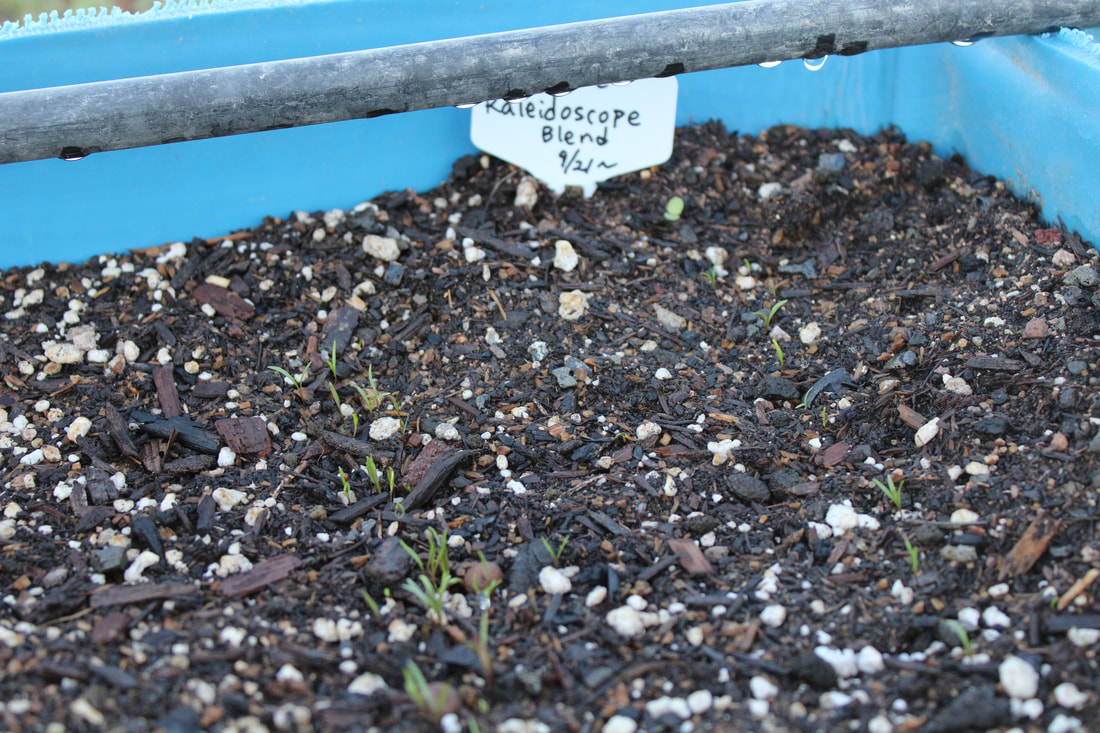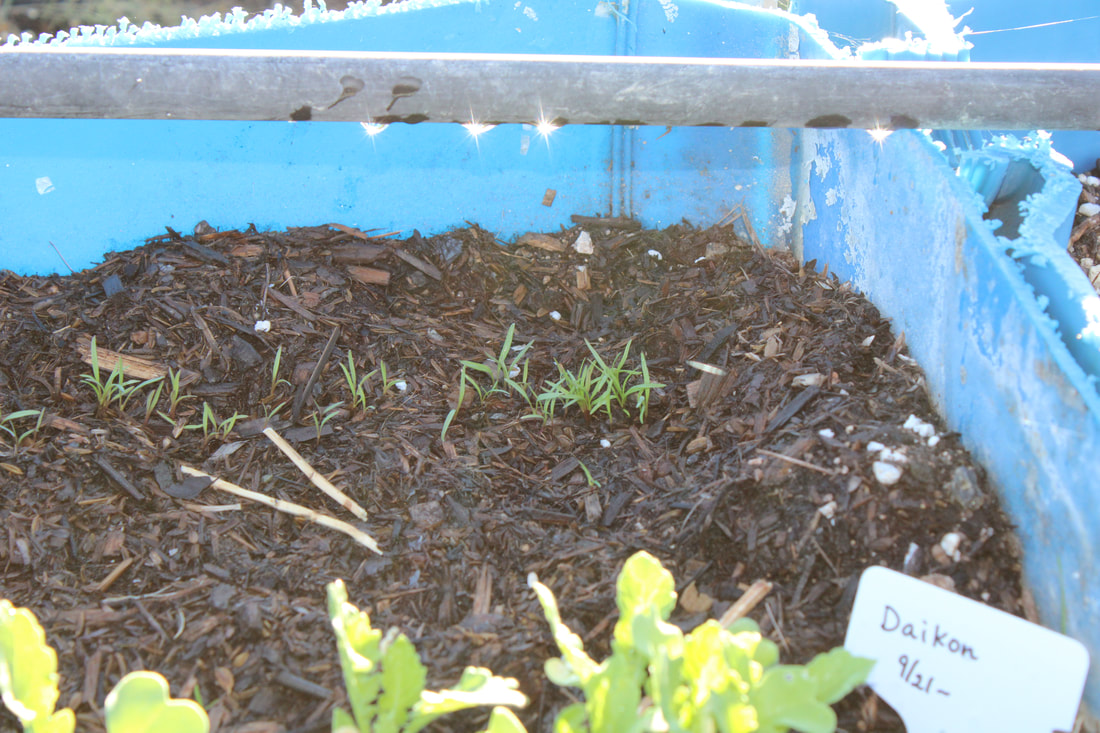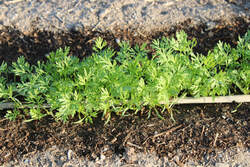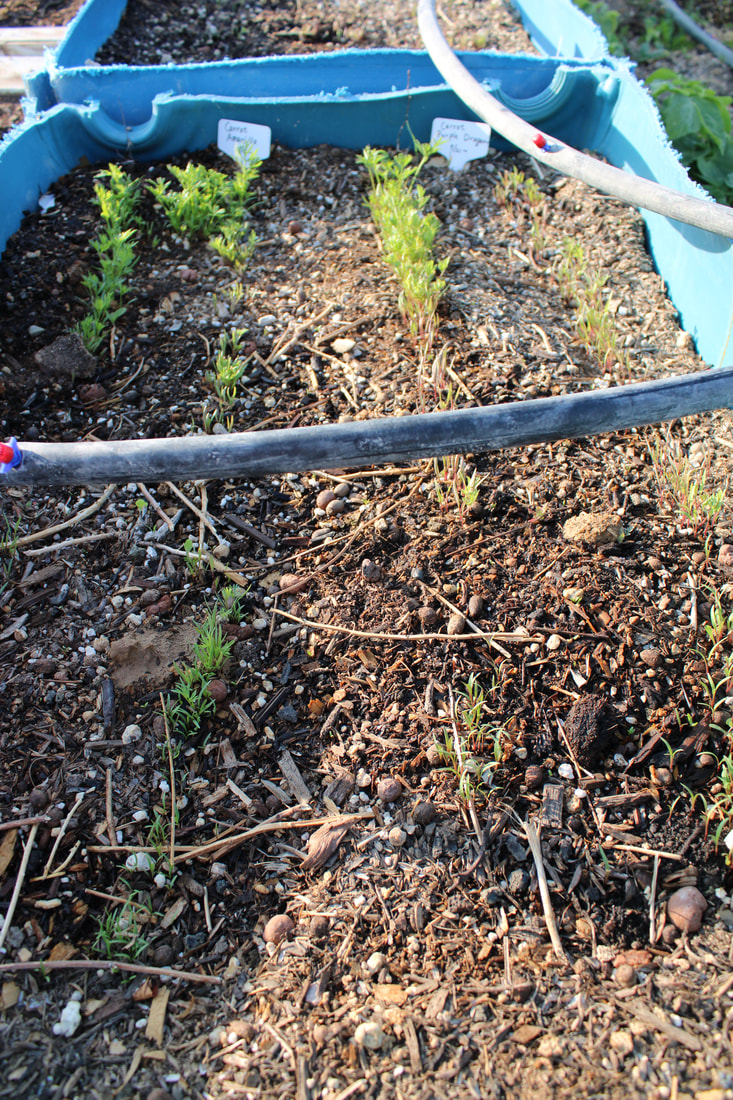I love carrots! So many different colors! I did some experimenting last year. I learned from the mistakes, and now I think I know what needs to happen. Here is an article from "The Old Farmer's Almanac" on how to grow carrots!
Carrots are easy to grow as long as they are planted in loose, sandy soil during the cooler periods of the growing season—spring and fall (carrots can tolerate frost). Depending on the variety and local growing conditions, carrots may take anywhere from 2 to 4 months to mature.
THE IMPORTANCE OF GOOD SOIL
Proper soil preparation is extremely important for carrot growing! If the carrot roots can’t easily grow unobstructed, it can lead to stunted and misshapen crops.
Here’s what to do to prepare your garden soil:
Misshapen carrots can be caused by heavy, compact, overly-enriched soil.
CHOOSING AND PREPARING A PLANTING SITE
HOW AND WHEN TO HARVEST CARROTS
Carrots are easy to grow as long as they are planted in loose, sandy soil during the cooler periods of the growing season—spring and fall (carrots can tolerate frost). Depending on the variety and local growing conditions, carrots may take anywhere from 2 to 4 months to mature.
THE IMPORTANCE OF GOOD SOIL
Proper soil preparation is extremely important for carrot growing! If the carrot roots can’t easily grow unobstructed, it can lead to stunted and misshapen crops.
Here’s what to do to prepare your garden soil:
- Till down 12 inches and make sure there are no rocks, stones, or even soil clumps that could impede your carrots’ growth.
- Avoid amending the soil with nitrogen-rich material such as manure and fertilizer, which can cause carrots to fork and grow little side roots. Instead, work in old coffee grounds.
- If your ground soil is heavy clay or too rocky, you should consider planting carrots in a raised bed at least 12 inches deep and filled with airy, loamy soil (not clay nor silt).
Misshapen carrots can be caused by heavy, compact, overly-enriched soil.
CHOOSING AND PREPARING A PLANTING SITE
- Carrots need a location that receives full sunlight, though they can tolerate partial shade, too.
- As discussed above, soil must be loose, sandy or loamy, and airy so that carrot roots can easily push down through the soil.
- We recommend sowing seeds directly in the garden (or wherever you plan to grow them) rather than transplanting. Carrots do not like to have their roots disturbed.
- Sow ¼ inch deep, 2 to 3 inches apart in rows 1 foot apart.
- Tip: Try to distribute seed in an even fashion so that seeds don’t grow together. Use a seed-sower or thin vigorously to the right spacing.
- Keep the soil moist with frequent shallow waterings. For small carrot seeds to germinate, the soil mustn’t form a hard crust on top; cover with a layer of vermiculite or fine compost to prevent a crust from forming. (If you put your finger in the ground, it should be moist, but not wet, to the middle knuckle.)
- Carrots are sometimes slow to germinate. They may take 2 to 3 weeks to show any sign of life, so don’t panic if your carrots don’t appear right away!
- Gently mulch carrots to retain moisture, speed germination, and block the sun from hitting the roots directly.
- When seedlings are an inch tall, thin so that they stand 3 to 4 inches apart. Snip tops with scissors instead of pulling them out to prevent damage to the fragile roots of the remaining plants.
- Water at least one inch (about ½ gallon per square foot) per week to start, then two inches as roots mature.
- Weed diligently, but be careful not to disturb the young carrots’ roots while doing so.
- Fertilize with a low-nitrogen but high-potassium and -phosphate fertilizer 5 to 6 weeks after sowing. (Note that excess nitrogen in the soil promotes top, or foliage, growth—not roots.)
- Black (Itersonilia) canker
- Carrot rust flies
- Flea Beetles
- Root-knot nematodes
- Wireworms
- Aster Yellow Disease will cause shortened and discolored carrot tops and hairy roots. This disease is spread by pests as they feed from plant to plant. Keep weeds down and invest in a control plan for pests such as leafhoppers. This disease has the ability to overwinter.
HOW AND WHEN TO HARVEST CARROTS
- Generally, the smaller the carrot, the better the taste.
- Harvest whenever desired maturity or size is reached. Carrots should be about as wide as your thumb or at least ½ of an inch in diameter.
- If you’re growing carrots in the spring and early summer, harvest before daily temperatures get too hot, as the heat can cause carrot roots to grow fibrous.
- Carrots taste much better after one or more frosts. (A frost encourages the plant to start storing energy—sugars—in its root for later use.) Following the first hard frost in the fall, cover carrot tops with an 18-inch layer of shredded leaves to preserve them for harvesting later.
- Note: Carrots are biennial. If you fail to harvest and leave the carrots in the ground, the tops will flower and produce seeds in the next year.
|
Oh I know I went a little overboard last year! My husband made a raised bed with recycled food grade barrels. We did not mess with our native soil for this round! I learned the lesson! This year, I got potting soil, amended with mulch and compost, I got the depth for my carrots! Here is the list of variety that I planted:
Purple Dragon, Amarillo, Kaleidoscope Blend, Nantes Organic, Rainbow Mix, Scarlet Nantes, Short 'n Sweet, Tendersweet. I sowed seeds on 9/21/2020. Since we are experiencing a long hot summer, I expected lower germination rate, so I sowed pretty heavy. Fortunately, it germinated in 8 days! All looking great! I just need to thin them out! This picture was taken on 10/10/2020. |
© Paperstacks, LLC All rights reserved.
Poof Dirt Farms: 2471 Gally Rd. Pahrump, NV
Phone: 702-412-6397 Email: poofdirtfarming@gmail.com
Phone: 702-412-6397 Email: poofdirtfarming@gmail.com








